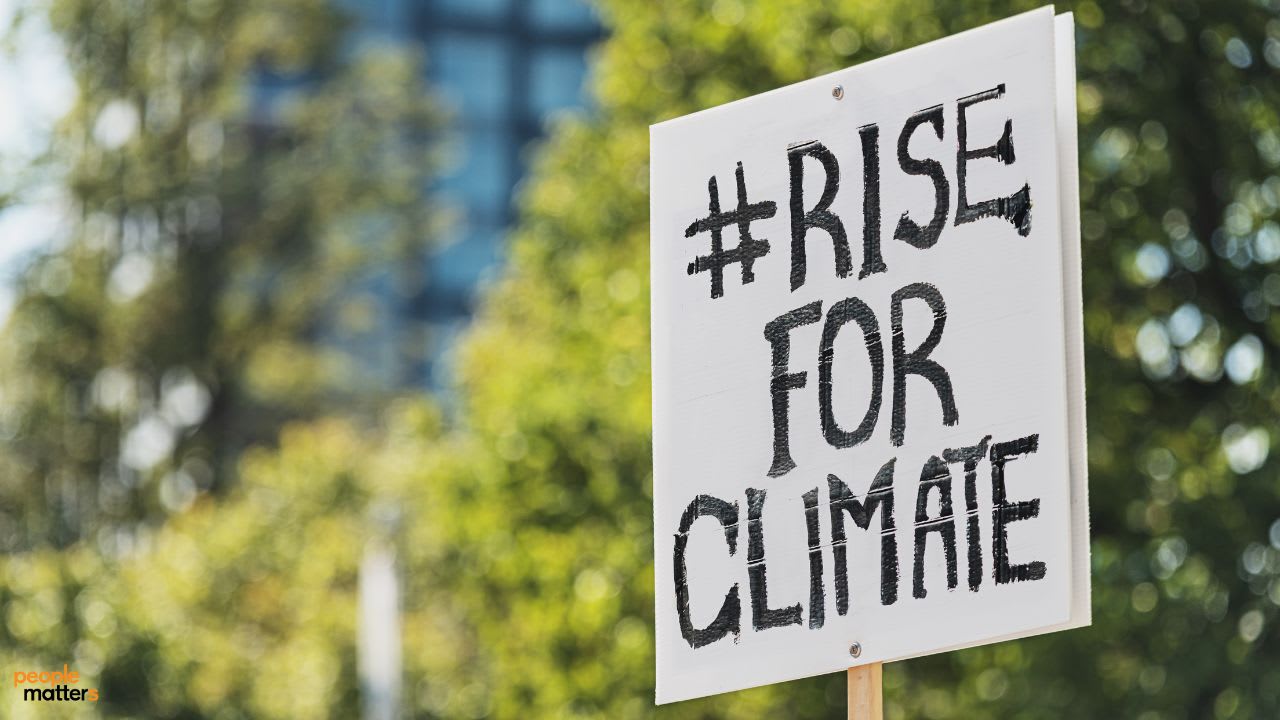Future of work: Climate crisis and the decline of productivity

The climate crisis is fuelling a silent economic meltdown. Soaring temperatures make for unhealthy environments, hurting employee efficiency and productivity in the process.
Recent studies reveal that productivity drops by 0.83% for every 1°C increase in outdoor temperature. By 2030, heat stress could cost the global economy US$2.4 trillion in lost working hours, a report by the International Labour Organization projects.
In the US, for example, extreme heat events have already shaved off an estimated $100 billion from the economy annually, according to the latest study published in the journal Science Advances.
Rising temperatures have become more than just a purely environmental issue. They are also a pressing business concern with far-reaching consequences for profitability, employee well-being, and the global economic landscape.
Read More: The economic cost of a warming planet
The impact of climate crisis on employee health and well-being
The physiological effects of the climate crisis are undeniable. High temperatures impair cognitive function, reduce physical stamina, and increase the risk of heat-related illnesses.
Heat stress can exacerbate existing health conditions, leading to increased absenteeism and reduced work hours.
The impact isn’t limited to individual workers, however. Workplace morale can also suffer as employees grapple with discomfort and safety concerns.
High temperatures can create a hostile work environment, hindering collaboration, creativity, and engagement.
From energy-guzzling office buildings to sweltering factory floors, the climate crisis is creating a “sweating economy” where the heat takes a toll on both physical and mental well-being.
Moreover, heatwaves can trigger a cascade of negative mental health effects, contributing to burnout and decreased morale.
Studies have shown a correlation between high temperatures and increased rates of anxiety, depression, and sleep disturbances.
The American Psychological Association found that extreme heat waves can have a negative impact on a person’s mental well-being.
The hidden cost of the climate crisis
The financial implications of heat-related productivity losses are substantial. In addition to the direct costs of reduced output and increased absenteeism, businesses also face indirect costs associated with employee turnover, decreased morale, and reputational damage.
The impact of extreme weather isn’t limited to outdoor workers either. Even those in air-conditioned offices can experience decreased productivity due to heat-related discomfort, sleep deprivation, and the stress of commuting in extreme temperatures.
As heatwaves become more frequent and intense, businesses must proactively address the risks they pose to the workforce. This includes implementing heat mitigation strategies, such as providing adequate cooling systems, offering flexible work arrangements, and prioritising employee well-being.
By recognising the hidden costs of extreme weather on workplace productivity, companies can take steps to protect their employees and their bottom line.
Read More: How to protect your workers in extreme heat
Strategies to mitigate the impact of climate change on productivity
While the climate crisis poses daunting challenges, businesses are not powerless. A range of proactive strategies can be implemented to mitigate the impact of rising temperatures on workplace productivity.
Adaptation measures are crucial in the short term. Improved workplace cooling systems, including air conditioning, ventilation, and shade structures, can significantly reduce heat stress but companies must ensure the technology they use does not add strain to an already warming planet.
Investing in climate-resilient infrastructure is a key strategy. This includes designing buildings with passive cooling techniques, such as green roofs and reflective surfaces, and incorporating natural ventilation.
In outdoor environments, planting trees for shade and using water features can help lower ambient temperatures.
Flexible work arrangements that allow employees to work from home or avoid working during the hottest hours of the day can also make a difference. In industries such as construction and agriculture, heat-resistant clothing and frequent hydration breaks are essential.
Beyond adaptation, businesses must also prioritise sustainability initiatives to reduce their carbon footprint and slow the pace of climate change. This includes transitioning to renewable energy sources, improving energy efficiency, and investing in carbon offset projects.
The transition to a low-carbon economy presents a significant opportunity for innovation and growth.
By embracing sustainable practices, businesses can protect their employees from the worst impacts of climate change and position themselves as leaders in a changing world.
Read More: Extreme heat pushing workers to demand better workplace safety measures
The future of work in a warming world
As the climate crisis intensifies, building a climate-resilient workforce is a necessity. Companies that prioritise long-term planning and invest in adaptation strategies will be better positioned to thrive in a warming world.
This means going beyond reactive measures and embedding climate resilience into the very fabric of their operations. It also means fostering a culture of sustainability, where employees are empowered to contribute to the company’s environmental goals.
Technology can also play a vital role in building a climate-resilient workforce. Artificial intelligence and machine learning can be used to optimise work schedules, predict heat stress risks, and identify opportunities for energy efficiency.
Moreover, businesses need to invest in training and education to equip their employees with the knowledge and skills needed to adapt to a changing climate.
This includes raising awareness about the risks of heat stress, providing guidance on heat safety practices, and fostering a culture of adaptability and resilience.
The future of work in a warming world will undoubtedly be different from what we know today.
By embracing change, prioritising employee well-being, and investing in sustainable practices, businesses can create a workforce that is not only resilient to climate change but also thrives in the face of it.


